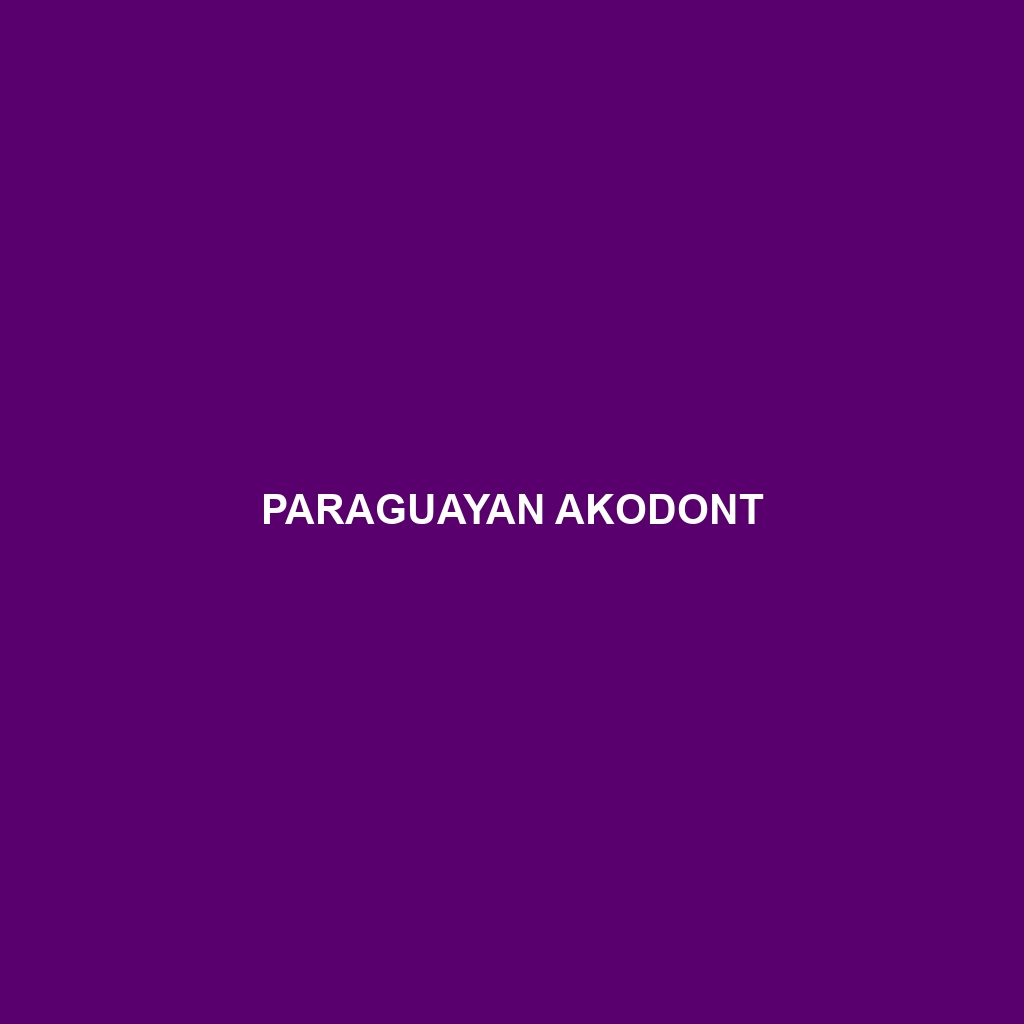Paraguayan Akodont
Common Name: Paraguayan Akodont
Scientific Name: Akodon paraguayensis
Habitat: The Paraguayan Akodont is primarily found in the grasslands and scrublands of Paraguay, particularly in the eastern and central regions. It prefers areas with dense vegetation that provide cover and foraging opportunities. The species is also observed in transitional zones between forest and open fields, showcasing its adaptability to various environmental conditions.
Physical Characteristics: The Paraguayan Akodont is a medium-sized rodent, typically measuring between 15 to 20 centimeters in length, not including the tail. Its fur is generally a soft brown or gray color with paler underparts, allowing it to blend seamlessly into its grassland habitat. Distinctive features include large ears and prominent whiskers, adaptations that enhance its sensory perception and navigation capabilities in its environment.
Behavior: Known for its nocturnal habits, the Paraguayan Akodont is predominantly active during the night. It exhibits social behaviors, often seen foraging in small groups. This species is known for its agility and speed, enabling it to escape predators effectively. Additionally, it tends to construct burrows for shelter and to store food, which reflects its resourceful nature.
Diet: The diet of the Paraguayan Akodont primarily consists of seeds, grasses, fruits, and roots. This omnivorous rodent displays opportunistic feeding habits, often consuming whatever is available in its habitat. Its role in seed dispersal is crucial for the health and regeneration of its ecosystem, as it contributes to plant propagation through its foraging activities.
Reproduction: The Paraguayan Akodont breeds year-round with peaks during the warmer months. Females typically give birth to litters of 3 to 6 offspring after a gestation period of about 25 days. The young are altricial, relying heavily on their mother for nourishment and protection during the early stages of life. Notably, parental care is extensive, with both parents often participating in raising the young.
Conservation Status: The Paraguayan Akodont is currently classified as ‘Least Concern’ by the IUCN, although habitat loss due to agricultural expansion poses potential threats. Continued monitoring of its population is essential to ensure it remains secure in its natural habitat.
Interesting Facts: The Paraguayan Akodont is often confused with other rodent species within the Akodon genus. Its unique adaptations to grassland environments make it a fascinating subject of study for researchers interested in rodent ecology. Furthermore, it plays a significant role in local folklore and cultural history among indigenous communities.
Role in Ecosystem: As a herbivore, the Paraguayan Akodont contributes significantly to its ecosystem by aiding in seed dispersal and plant propagation. Its burrowing behavior also aerates the soil, promoting healthier plant growth. Furthermore, it serves as a vital food source for various predators, thus maintaining a balanced food web in its habitat.
